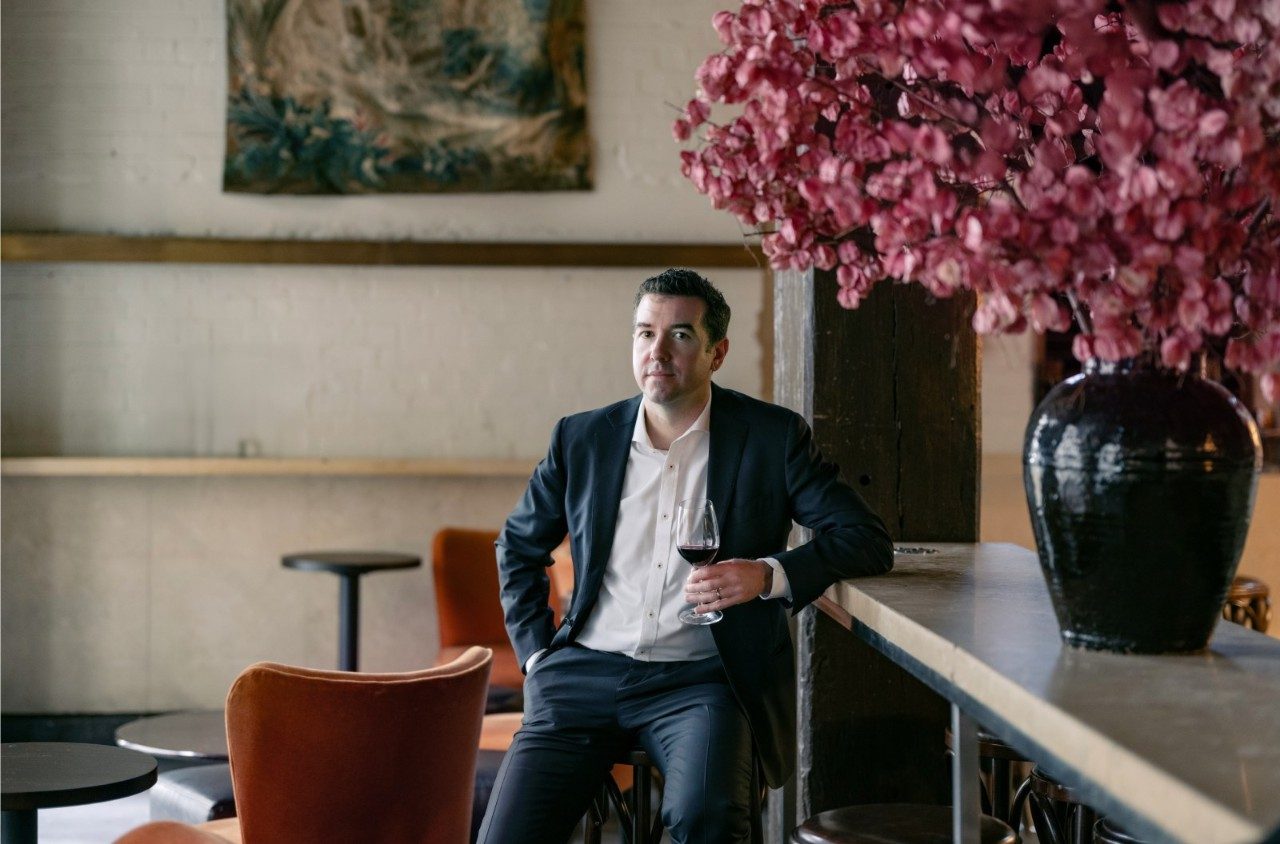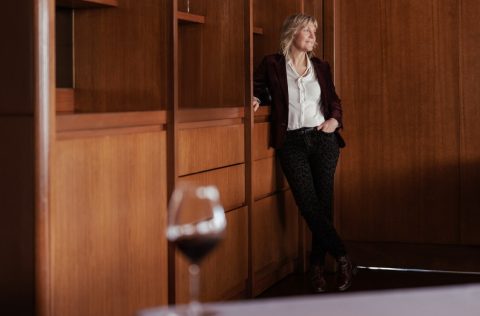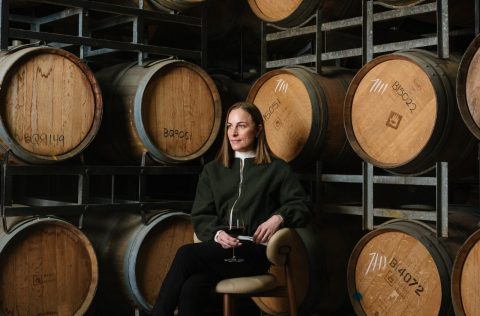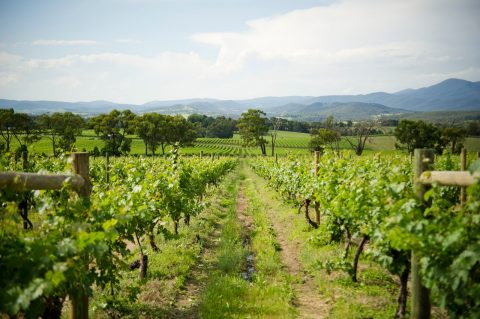From Fresh Innovations to Less Intervention: How Australia’s Wine Industry Is Leading the Way

Subtlety and innovation are the new drivers for a wine industry that continues to impress on the global stage.
When Australia emerged as a serious player on the world’s wine stage in the 1980s and 1990s, we arrived with a bang louder than a champagne cork hitting the ceiling. At the time, our premium wines tended to be dominated by big, butter-forward chardonnays, hefty Coonawarra cabernets and muscular shirazes. They were known, according to Master Sommelier Sebastian Crowther (pictured above), wine distributor and a longstanding judge of wines for Qantas, for their quality and innovation. And the same can be said of our wines today. “Blind benchmark tastings, held regularly in Australia and abroad, consistently show Australian wines ranking alongside or outperforming some of the world’s best,” he says.
Those classic styles put Australia on the oenophilic map and they still have an important role to play in our national wine identity. But in the 21st century, the Australian wine world is also becoming more nuanced and varied, partly as a response to changing palates and preferences, and partly as newer winemakers and growers bring fresh ideas to the glass.

“Australian wine is leaps and bounds ahead of where it was 15 or 20 years ago,” says Master of Wine and Solotel group beverage manager Annette Lacey (pictured above). “There are some fantastic wines being made and I think we’re becoming really thoughtful and measured about the wines we’re trying to make.”
New-generation winemakers are putting an increased emphasis on terroir, sustainability and innovation. “These winemakers are often working in lesser-known regions like the Adelaide Hills, Tasmania or the Alpine Valleys, focusing on minimal-intervention, organic or biodynamic farming,” says Crowther, citing Tillie.J Wines (Yarra Valley), Koerner Wine (Clare Valley and Adelaide Hills), Gentle Folk (Adelaide Hills) and Battles (various locations in Western Australia) as names to look out for.
Wines that express the personality of the land they come from and the people who make them are becoming increasingly common, says senior winemaker Sarah Burvill (pictured below) from the Adelaide Hills-based Bird in Hand Winery. Whereas once winemakers may have put all their energies into creating a consistent product, year in, year out, many younger players are happy to let the soil and the grapes do the talking, even if that means their wines have quirks and foibles from vintage to vintage. “The most exciting trend right now is the growing focus on authenticity and sense of place. That’s how I describe my philosophy now: we’ve moved away from creating a ‘sense of style’ and are embracing a ‘sense of place’,” says Burvill.

When terroir is the focus, it’s natural that winemakers would put greater emphasis on caring for the land where their grapes are grown. Many vineyards are using fewer chemicals for grapegrowing and incorporating natural land management practices, such as companion planting or investing in varietals better suited to their particular climate. Less intervention during the winemaking process is also becoming more accepted.
Even packaging is moving with the times, albeit fairly cautiously. Industry innovators are looking at bottling wines in lightweight glass, which produces fewer carbon emissions during production and transportation as well as being easier to recycle. “We should all be celebrating lightweight glass,” says Burvill, who acknowledges that there’s currently a degree of pushback in the market, as some customers perceive the wine as cheap or the glass fragile. But she believes it’s only a matter of time before consumers, especially those of a younger generation, embrace the change in the same way they came around to screw caps replacing corks. “They know they are doing something to protect the planet so I think they’ll be the ones to push this innovation forward.”
Australia’s diverse climate and geography means that an enormous variety of styles can be grown across the country, from the crisp, refined sparklings of Tasmania to the ripe, full-bodied chardonnays of Margaret River. Lesser-known or appreciated grapes and styles are beginning to emerge as consumers lean towards fresher, lighter wines. “Grenache is emerging from the shadows of shiraz and cabernet sauvignon to become one of Australia’s most exciting varietals,” says Crowther. Once relegated to the world of fortified wines or blends, it’s starting to shine in its own right. “It’s being celebrated for its ability to produce elegant, medium-bodied reds with vibrant fruit, spice and earthy complexity.” He lists Alkina, Bulman Wines, Thistledown Wine Company and Aphelion – all from SA – as leading local grenache producers.
Lacey is intrigued and delighted about the high-quality dry rosés that can be found in Australia, as well as our creative sauvignon blancs. “And I really love chenin blanc – another style we’re starting to see more of. There are some great young producers in Western Australia.” She’s also excited about the rise of what she calls “medium crunchy reds” – wines that don’t overpower the palate with excessive tannins. And she believes Australia has finally found its chardonnay happy place, with a rise in styles that are neither too heavy and oak-forward, nor too spare and lean. “We’ve found a sweet spot right in the middle.”
The industry is not, of course, without its challenges. Consumers are drinking less than ever, particularly those in the younger age groups, and most wine experts agree that the perfect non-alcoholic wine is yet to be created. But there are still plenty of reasons for positivity. People still see drinking wine as a way to mark a special occasion, with Aria, one of the Sydney restaurants under Lacey’s remit, experiencing record wine sales during holiday periods and its strong Coravin program proving that consumers are still keen to explore high-quality wines by the glass.
“Young people who are interested in wine will still spend money on good wine,” adds Burvill. “But they want to know more about it – its provenance, its history, its story. They want it to make them feel something.”

Start planning now
SEE ALSO: Introducing the Winners of Australia’s Wine List of the Year Awards 2025
Image credits: Nic Walker (Master Sommelier Sebastian Crowther and Master of Wine Annette Lacey); Meaghan Coles (Winemaker Sarah Burvill)


